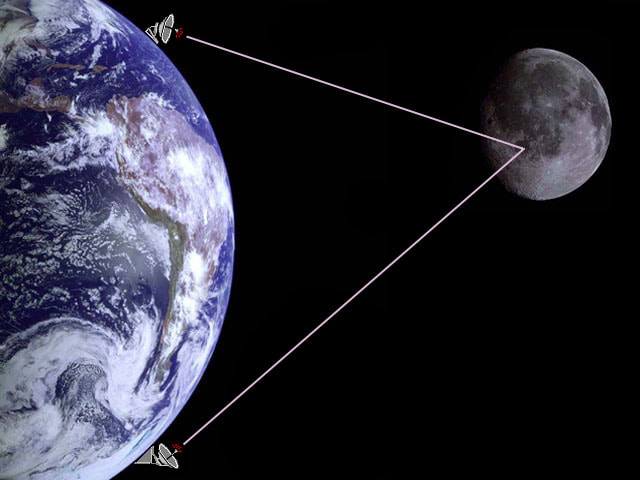After the War ended with the Axis powers soundly defeated, the temporary alliance between the Western bloc, led by the US, and the Eastern bloc, led by the Soviet Union, became unraveled by their profound social, economic, and political differences. The result was a Cold War between these two superpowers that lasted for over forty years, sustained by the belief on both sides that only the buildup of arsenals capable of “mutually assured destruction” could keep either side from demolishing the other. It was also characterized by the development of spy technology far more advanced than anything that preceded it - technology that, to remain effective, demanded almost epic levels of secrecy by those in the know.
Not long ago a reader kindly referred me to a recently declassified document, originally published in 1967, in which the author, Frank Eliot, asserts that the “entirely new technique” emerging directly from Project Diana - that is, using the moon to receive and reflect radio signals - offered a possible solution to the thorny problem of how to intercept Russian radar signals in an era when flights over the Soviet Union were prohibited. Although Project Diana involved monostatic transmission - that is, sending and receiving signals in the same location - a Naval Research Laboratory engineer named James Trexler figured out as early as 1948 that signals emanating from one location (e.g., in Russia) could potentially be detected via bistatic transmission to other locations (e.g., in the US) if they happened to bounce off the moon.
Thus was born the highly classified PAssive MOon Relay or PAMOR, code-named "Joe." Initial tests proved so promising that the project was intensified, at even deeper levels of secrecy. As one wag put it, “Leave it to the US Navy to weaponize the moon.”
There were more ways for this effort to fail than to succeed, but the military got lucky - not only in having favorable antenna locations and encountering favorable lunar conditions, but also, in the case of the “Hen House”, a major anti-ballistic missile operation deep within the Soviet Union, in being able to take advantage of occasional brief practice sessions during which the Russians actually set their radar to track the moon. In the end, PAMOR proved to be an intelligence coup, continuing to yield information until the late sixties, when it was obsolesced by communications satellites.
PAMOR's success led the Naval Research Laboratory, in the mid 1950s, to commission an ambitious spinoff code-named Operation Moon Bounce, a series of experiments to test the feasibility of using the moon as a natural communications satellite. These tests were so effective in refining moonbounce technology that Operation Moon Bounce was used for several years to link Hawaii with Washington DC. Like PAMOR, Operation Moon Bounce was superseded in the late 1960s by networks of communications satellites - networks whose design profited from the experience gained during the Moon Bounce tests.
Moonbounce communication, generally referred to as Earth-Moon-Earth or EME, is now largely the province of amateur radio enthusiasts, who continue to reap the benefits of Operation Moon Bounce and ultimately of Project Diana.
Still, this explanation has never entirely satisfied me. Why (per an earlier post) should those who left the Signal Corps (that is to say, those over whom the Army no longer maintained control) be selectively denied media attention? Why should my father, even decades later, have trouble gaining access to his own earlier work? Even granting that DeWitt was an ask-for-forgiveness-not-for-permission kind of guy working in an organization that prized discipline, it all seemed - well, a bit of an overreaction on the Army’s part.
The recently declassified article by Eliot has given me a somewhat different perspective on this issue. In short, it suggests that the Army discouraged media attention less because of what the Project Diana team did wrong and more because of what it did right.
The success of PAMOR clearly depended on the Soviets' remaining unaware that their emissions were being monitored, a consideration that makes the Army’s wish to control information that might provide clues about the extent of its capabilities more understandable. Likewise, severely restricting access to information about PAMOR and its debt to Project Diana based strictly on need-to-know provides a more plausible explanation for classifying it above my father’s level of security clearance than an arbitrary determination to curtail access to his own work, even though it did in fact have this (presumably unintended) consequence.
Did my father know about PAMOR? He obviously wouldn’t have told me if he did, but given that documents such as the Eliot article weren’t declassified until 2014, I tend to doubt it. Had he known, he might have been more philosophical about the modest notice given by the Army to Project Diana’s milestone anniversaries.


 RSS Feed
RSS Feed